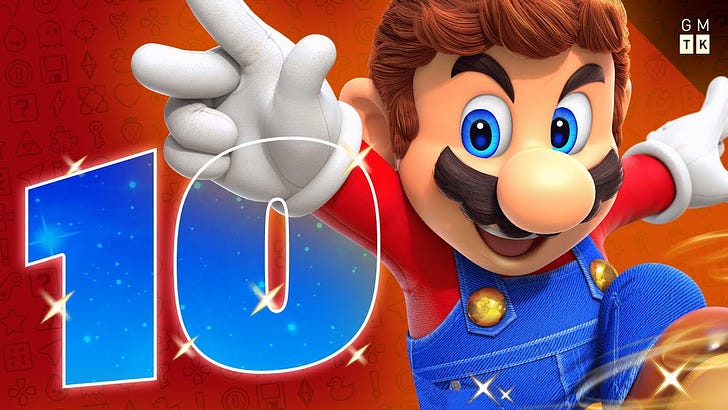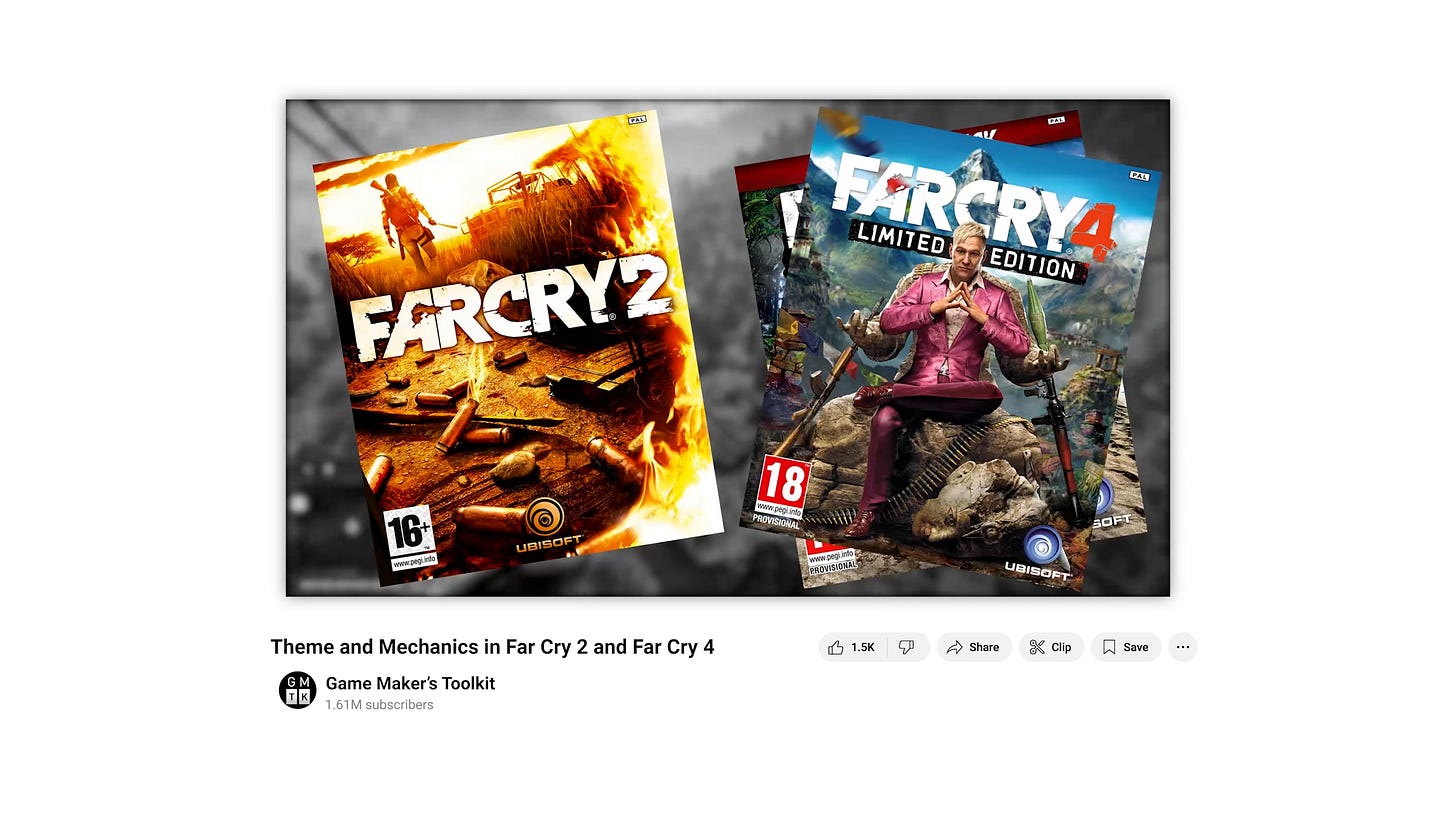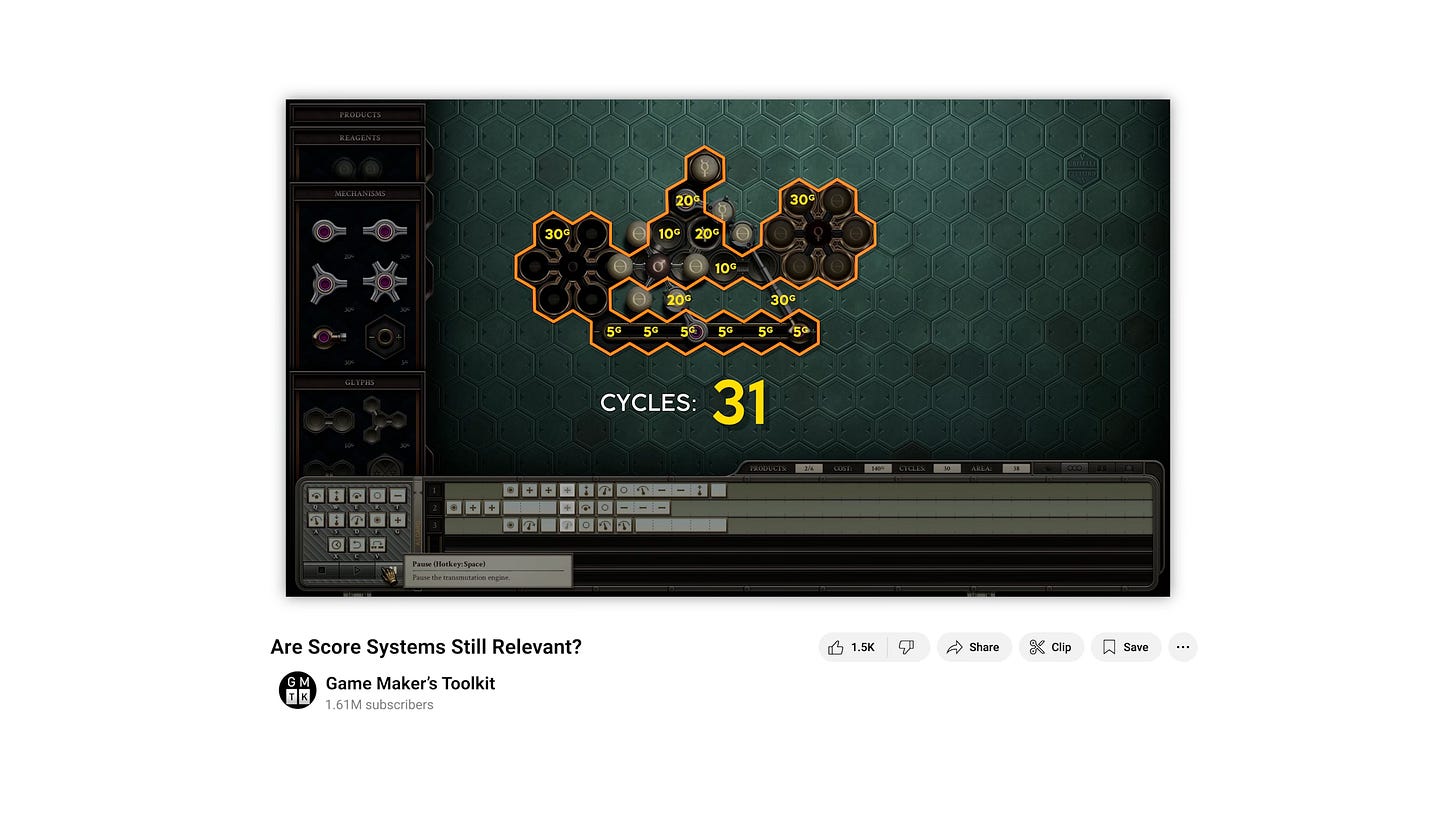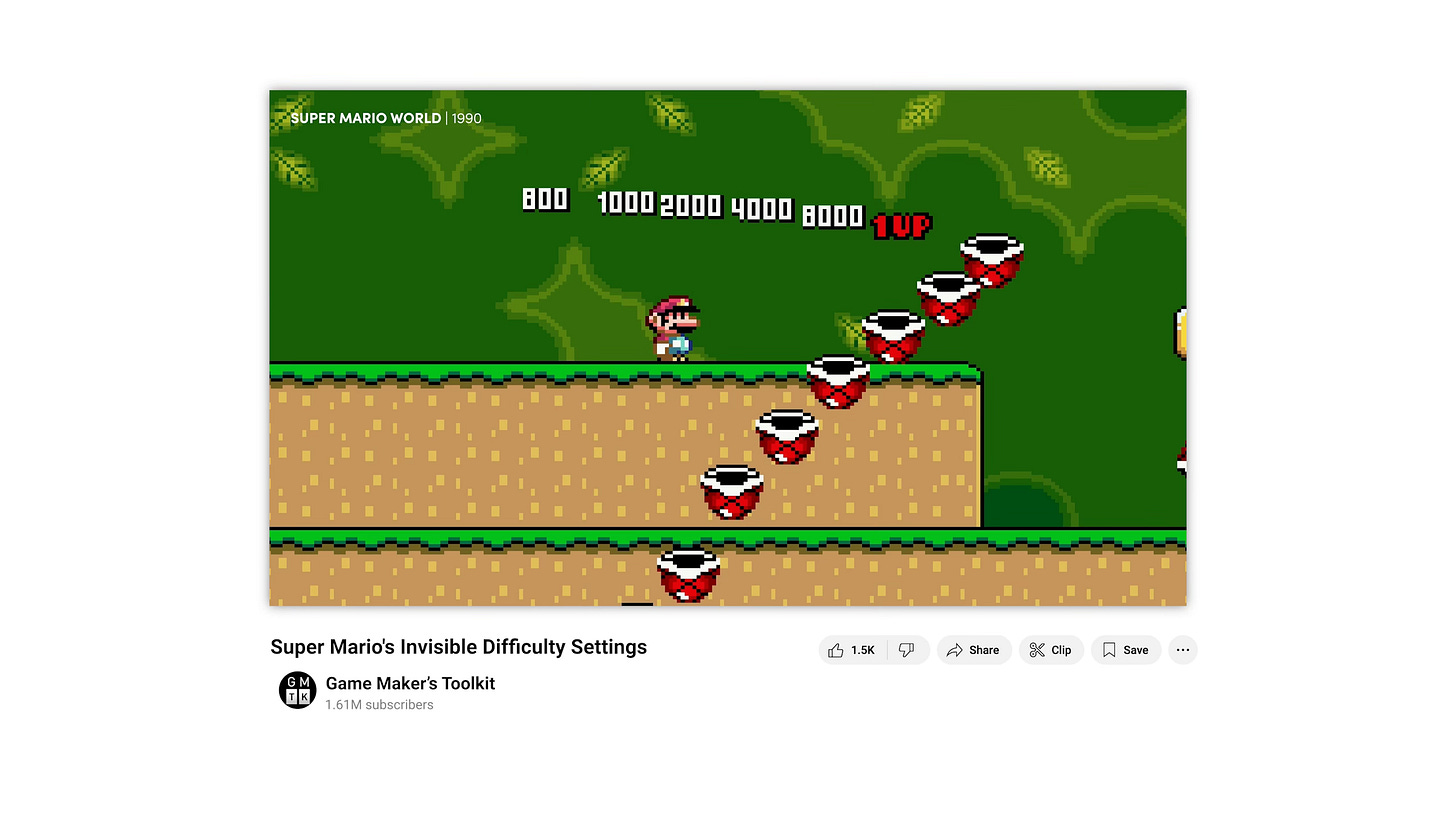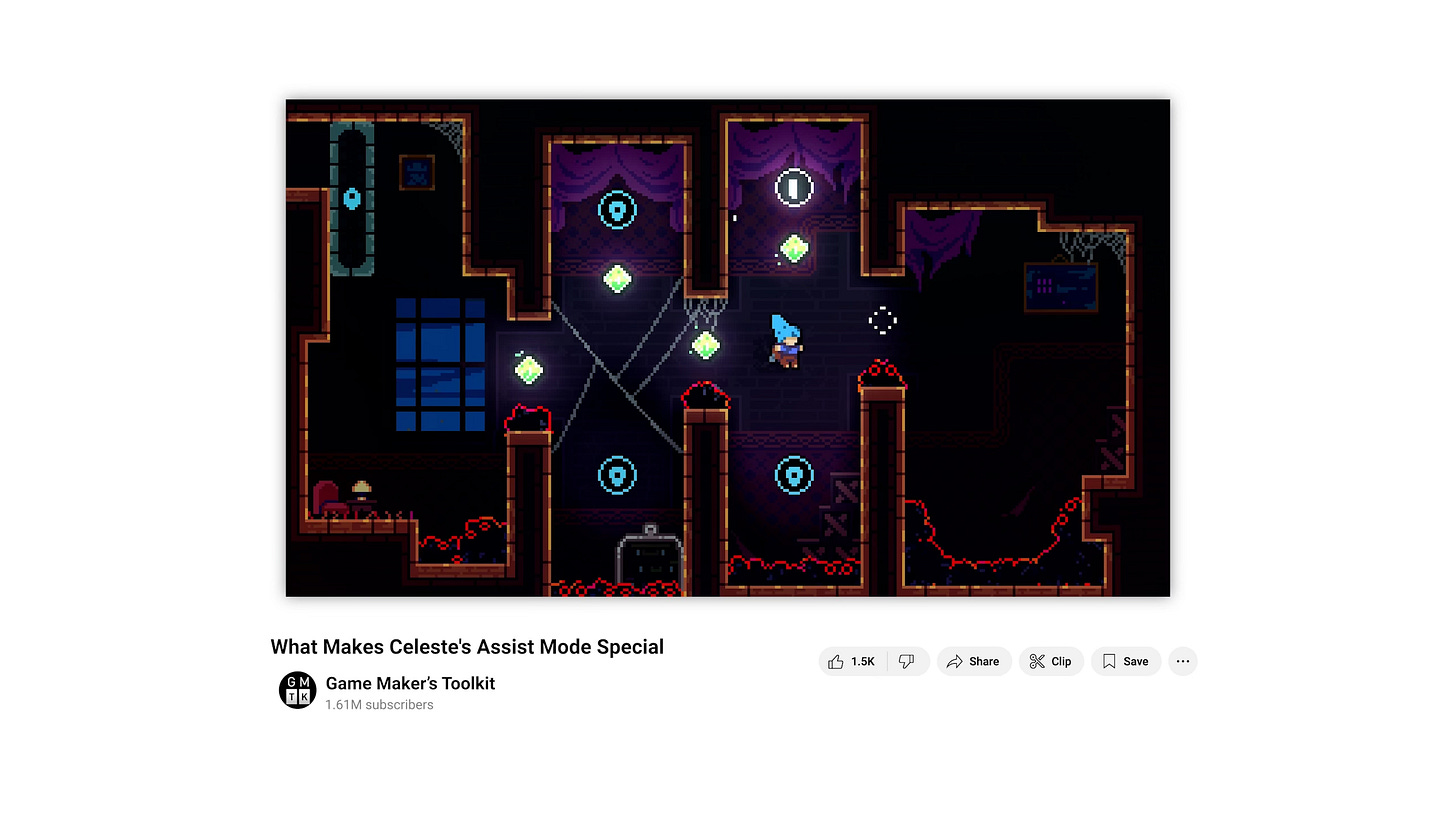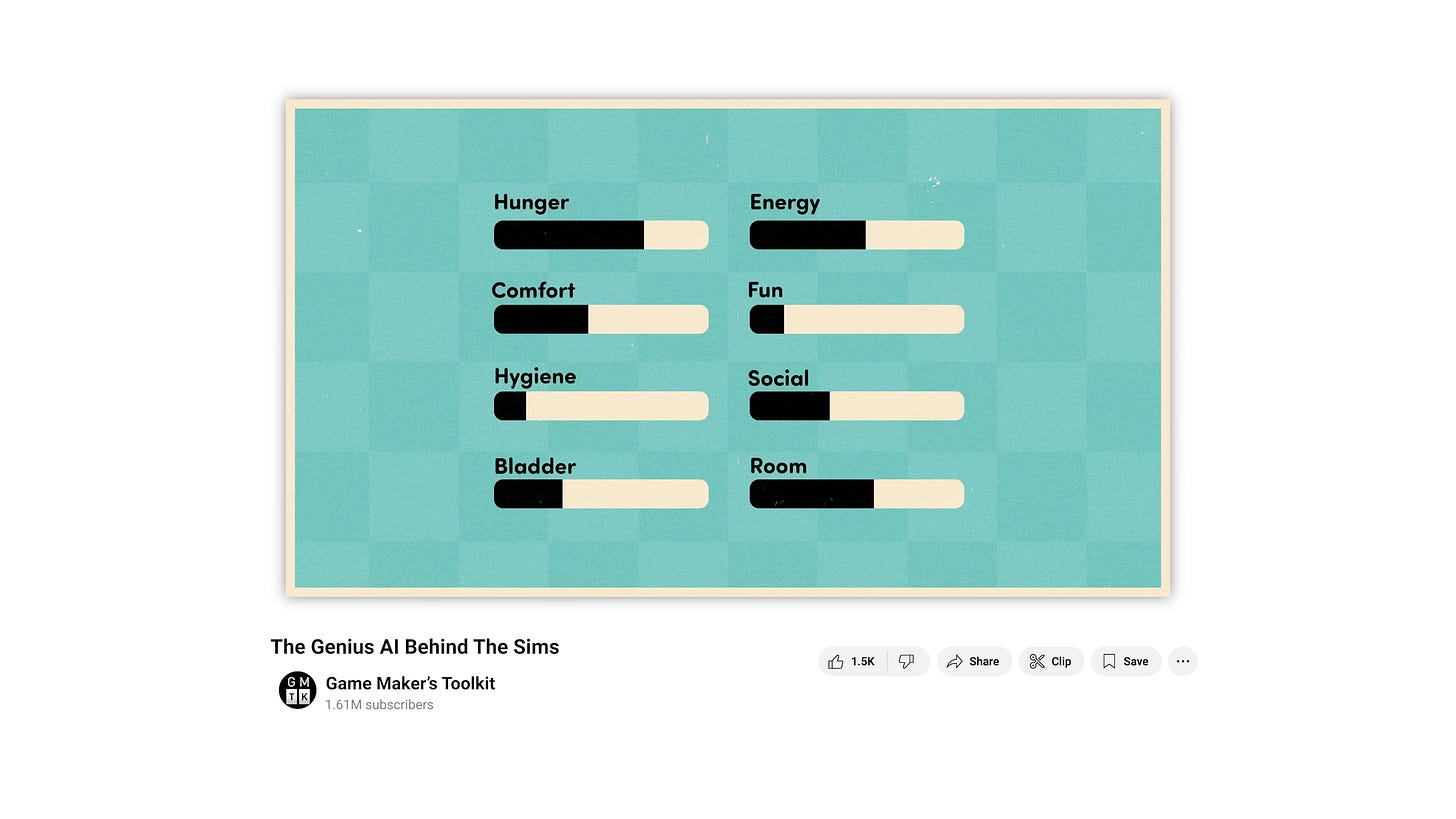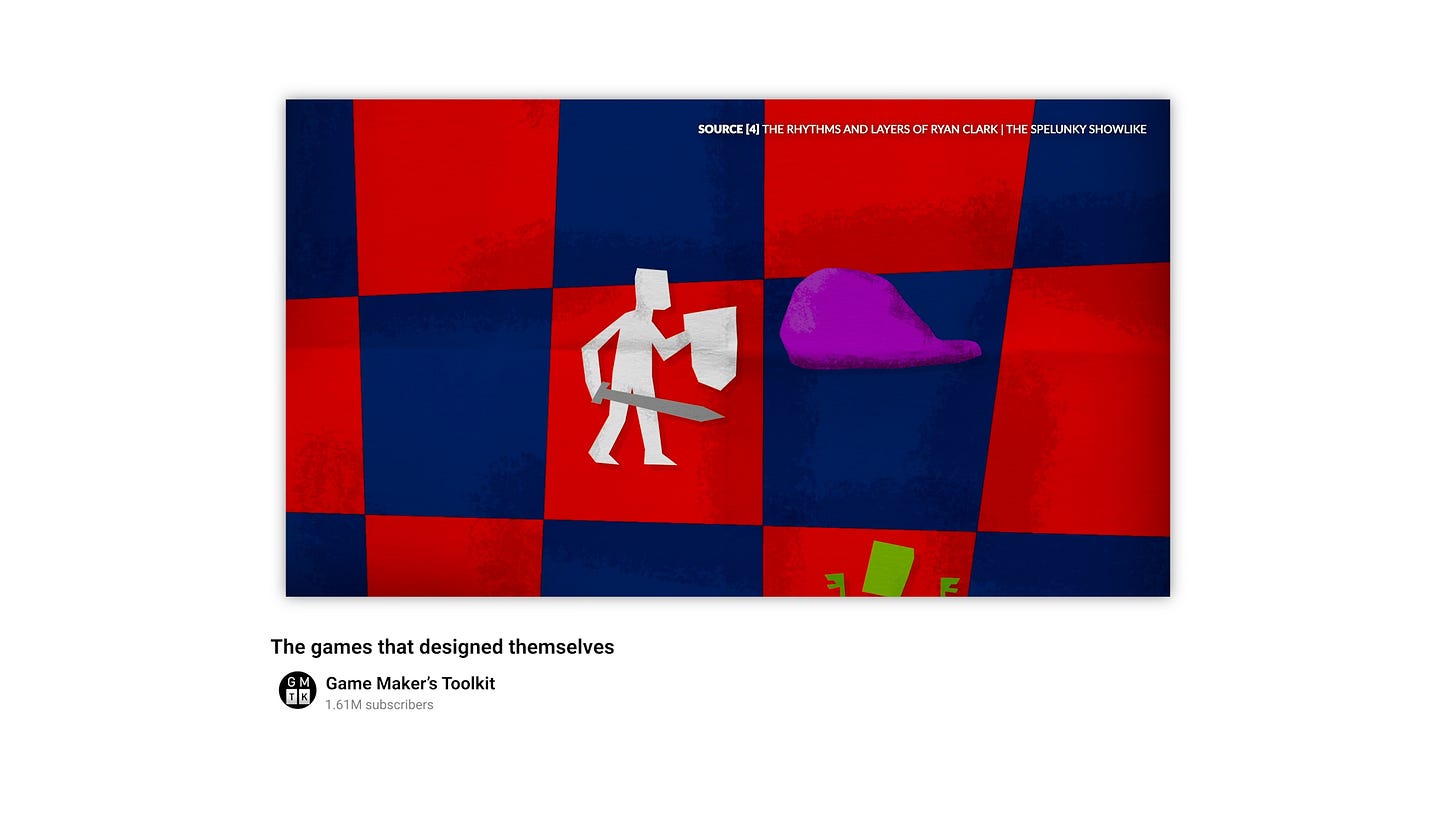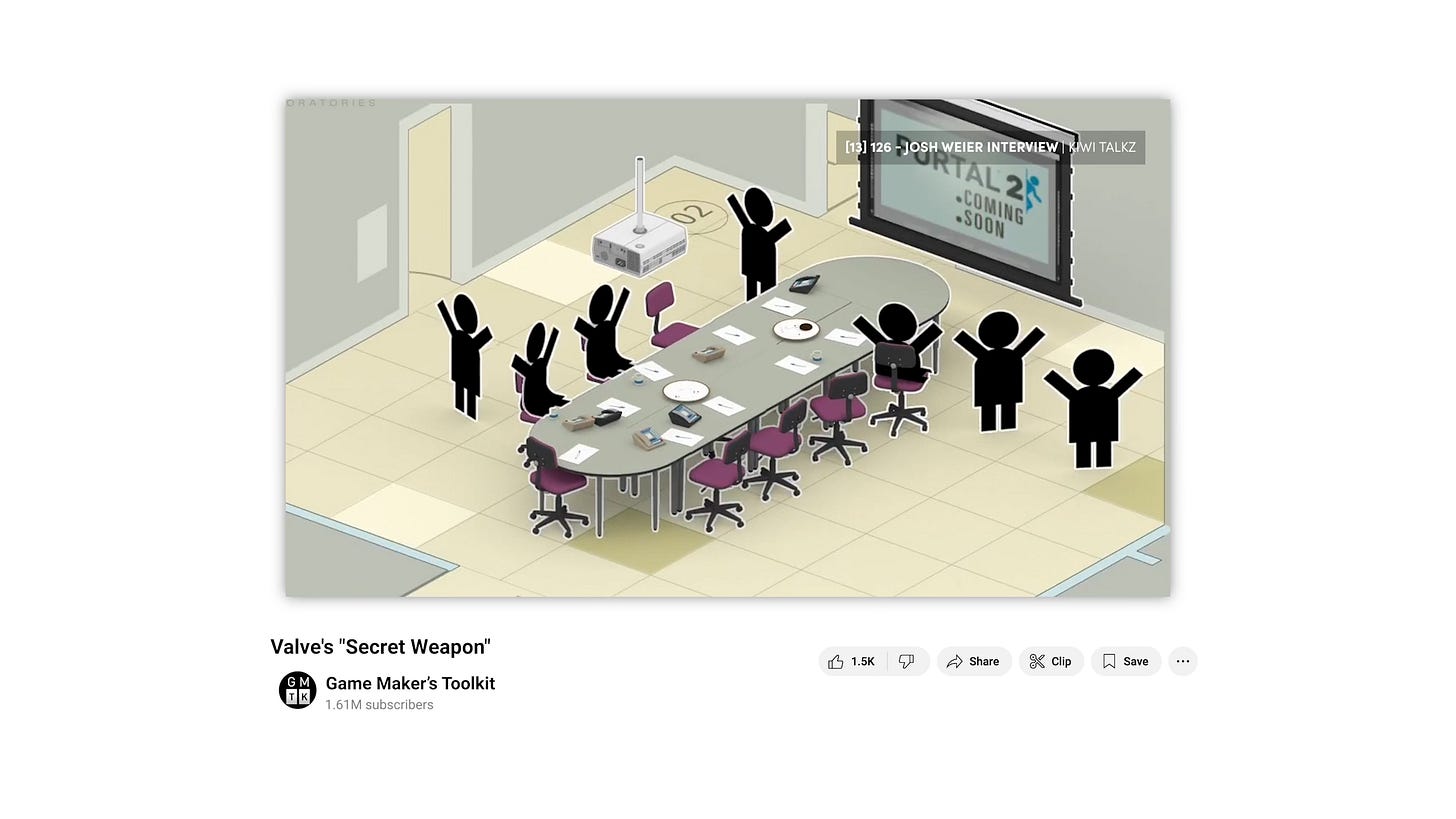On November 6th, 2014, I uploaded the first video to a YouTube channel called Game Maker's Toolkit - a channel where I could tell you absolutely everything I know about game design.
And now - ten years, 200 videos, 8 game jams, and countless dungeon design flow charts later - I can finally reveal the truth.
I didn't really know anything about game design!
Because despite the fancy motion graphics, the lo-fi hip hop soundtrack, and the commanding British accent - all things that help give the channel an air of authority and knowledge - I am, truthfully, no expert.
But I wanted to learn. I wanted to understand the craft and cleverness behind my very favourite hobby. And so every video was an opportunity for me to find out more. Through research and interviews and analysis. And then I could pop on YouTube (and now Substack!) and share what I've learned with all of you.
And you know what? It worked. I've learned so much about the field of game design in this last decade. And so to mark this massive milestone, I want to share with you the ten biggest lessons of them all.
Basically - if I could boil down 50 hours worth of GMTK videos into a single post, this is what I would make. So join me on a whistle stop tour of all the lessons, learnings, revelations, and mistakes from the first ten years of running my channel.
Lesson 1
One of my very first videos looked at two games: Far Cry 2 and Far Cry 4.
Now on the surface these games are very similar: they're both about civil wars in fictional countries. They both have charismatic villains. They both have enemy camps and exotic animals. And they both have the words Far and Cry in their name. What are the chances?
But the similarities end there because when you actually pick up the controller and start playing, you'll realise that these games are completely different. One is a thrilling blockbuster action movie rollercoaster. And the other is literally the worst package holiday you've ever been on.
And so with this video I learned one of the most fundamental game design lessons: that a game's experience is not driven by the plot, or by the graphics, or by the setting - but by the game mechanics.
Far Cry 4 is fun because you have loads of ammo, you can track your enemies, and you can permanently wipe your foes off the map. And Far Cry 2 is harrowing because your weapons can jam, your jeep can break down, you have to stave off bouts of malaria, and dying sends you all the way back to the last save station.
So if you want to understand why a game makes you feel a certain way, ask yourself: how do the mechanics contribute to the experience?
Lesson 2
In 2018 I made a video that asked the question: are high scores and leaderboards still relevant in modern games? Or are they just an antiquated relic of the arcade era?
If you were hoping for a definitive answer one way or the other, you'd be disappointed because the truth is: it depends. This mechanic makes sense in some games, and doesn't work for others. And there are both pros and cons to including such a system in your game.
And so with this video I learned the lesson that there's no such thing as a right or wrong game mechanic. As per lesson one, it totally depends on what sort of experience you want players to have.
I've revisited this point a number of times. Are lives outdated game design? Should roguelikes save your progress between runs? Should a game have a fixed camera perspective? The answer is always the same: it depends on the type of game you're making.
It's tempting to use a game mechanic because it's trendy. Or to ignore a game mechanic entirely because it feels out of date. But the only way to judge a mechanic is to ask whether or not it can contribute to the experience you're trying to forge.
Lesson 3
In that same year, I made a video about Insomniac's first Spider-Man game. And I came to the conclusion that the game was pretty disappointing because the web-swinging system was so simple.
I mean, you can swing through Manhattan just by holding down a button. The game employs dozens of hidden physics hacks to aid your every move. And it's impossible to splat Spider-Man into the side of a sky scraper.
Now I thought the lesson of that video was that in order to give the player a thrilling power fantasy, you had to provide significant challenge, with complex inputs, and high stakes for failure.
But the real lesson of this video was: I was wrong.
Because, sure - the game was disappointing to me: a hardcore gamer who loves in-depth movement systems with high skill ceilings. But I never asked the question: was Spider-Man actually made for me?
Because a game is built for a target audience. A specific type of person or player. And if you consider that a blockbuster PS4 movie tie-in is probably aimed at a more casual gamer... well then Insomniac should really be praised for finding a way to give those players the incredible sensation of being Spider-Man.
Even if it didn't work for me.
So when it comes to making a video game, you have to decide who this game is for, and tune your mechanics appropriately. You can't please everyone, right?
Lesson 4
Well, I dunno, actually. Because earlier this year I made a video called Super Mario's Invisible Difficulty Settings. And in this one I looked at how Nintendo tries to make its flagship franchise fun for everyone.
Like, modern Mario games are made for families and newbies, so they are designed in such a way that it's pretty easy to make your way to the final boss, and to the end of the story.
But if you're a seasoned plumbing pro who's been stomping Koopas since 1985, well, you're not going to be bored. And that's because there's loads of optional harder content to sink your teeth into. Tricky coins to collect. Tough bonus levels to play. A secret post-game world to unlock. And challenges to finish.
So with this video I learned that options and bonus content can be used to make a game appealing to those who are more hardcore than the target audience. Oh, and hats off to Insomniac, who included a setting for harder swinging in Spider-Man 2.
Lesson 5
But what about the other way around? What if you make a game that's really difficult, and then find that certain players are unable to play or finish it?
I grappled with this when asking the question "Should Dark Souls Have an Easy Mode?" I mean, FromSoft's haunting fantasy epic is intentionally challenging to give players a specific experience - of being scared out of your wits, but then having a feeling of triumph when you finally overcome those impossible odds.
Now dure, you could provide an easier difficulty mode. But if players picked that option, wouldn't it rob them of the intended experience?
Well, I learned an important lesson in the video "What Makes Celeste's Assist Mode Special". This precision platformer is also crushingly difficult - but unlike Dark Souls, it features a wildly permissive set of options that let you make the game as easy as you need it to be.
But here's the kicker: the developers carefully explain the point of this mode, before you turn it on. They make it clear how Celeste is supposed to be played, but also offer a way to reduce the difficulty if you need it. Say, if you're new to games, or you live with a disability, or you're more interested in the storyline than the challenging jumps.
Options, accessibility settings, and easy modes don't have to pose a threat to your intended experience. You just have to find a smart way to push players into seeing the version of the game that fits their needs best.
Lesson 6
Okay, let's move off that track and talk about something else.
One of the most popular subjects in gaming discourse is the topic of genres. Not a day goes by on Reddit without someone asking if a game truly counts a roguelike. And we can't go a week in the GMTK Discord without someone pointing out that Mario Kart is secretly an immersive sim, or some mad nonsense.
But in the video "Do We Need a Soulslike Genre?", I learned that while it's fine for players to get preoccupied with genres, we don't want our game designers to be so obsessed.
You see, when that video released in 2017 we were inundated with games that closely copied the FromSoft formula. Games with hastily renamed versions of souls, bonfires, and estus flasks. And they all felt... pretty samey. That's because if you consider a genre to be a long list of must-have mechanics you saw in a specific game... well, you'll end up making the same thing over and over again.
Instead, designers should think of genres in the loosest possible terms. That way you can add and remove features at will. Mix and match different genres. And make stuff that feels fresh and innovative, rather than predictable and familiar.
Lesson 7
You might think that the best way to make enemy AI is to craft an utterly convincing, ultra lifelike, galaxy brain super being.
But when I did the research for the video What Makes Good AI, I realised that the point of AI is not to try and pass The Turing Test - it's to present interesting gameplay. And, again, as per lesson one, give players a specific experience.
And ever since that video I've made a habit of breaking down seemingly complex systems to see how they're actually quite simple. And how the real trick is using these basic systems to create magical experiences for players.
So by looking at the Nemesis System and the AI of The Sims and more, I learned that the best solution for a complex problem is whatever provides the most interesting experience to the player.
Lesson 8
Okay, so with all this theory and analysis under our belts, you might think we'd have everything we need to know in order to make our own game.
But we'd be wrong. Because when I started to make my own games, I quickly discovered that a game idea is basically worthless until you actually build it, and can try it for yourself.
Our brains are truly bad video game simulators. Everything seems fun in our mind's eye. But you can only spot the problems, the design flaws, and the unintended issues when the game is real. Theory can get you so far, but nothing beats playing the game itself.
But that's not all bad: as I saw in the video The Games That Designed Themselves, sometimes the best game ideas actually come about through the process of making the game. Whether it's a bug, a happy accident, or a sudden realisation, amazing stuff can occur during the development process.
Ultimately, a game idea is worthless until you've proven its value through a prototype.
Lesson 9
But even then, you're going to see that your game design is busted. Because as I've learned many, many times during the development of my own game, players are quick to find faults that you never knew your game had.
They're going to get lost, not understand the controls, overthink and underthink your puzzles, make assumptions you never considered, and more.
So, as I saw in the video Valve's "Secret Weapon", it pays to get playtesters involved at every stage of the process. And as I learned in the video How Game Designers Solved These 11 Problems, being a designer is as much about solving playtesting problems as it is about coming up with cool new game ideas.
Game design is about building a game for other people, so frequent playtesting should be used to make sure your design is effectively producing the results you desire.
Lesson 10
And finally - I think the biggest lesson I've learned through all of this is that any lesson you've learned... needs to be constantly re-evaluated. Things change, people change, your opinions change, the industry changes, trends change. And, more than any of that, we can make mistakes. So it's important to always be open to a rethink.
Basically: never take some game design lesson as gospel. Especially if it's coming from a YouTuber.
Take in as many game design lessons as you can, but make sure you always figure out for yourself if a game design lesson is true for you, and for the type of games you want to make.
So there we have it. The ten biggest lessons I've learned from ten years of doing Game Maker's Toolkit.
And what a wild ten years it has been. Aside from all the videos I've made, I've been lucky enough to travel the world and give talks and lectures at so many schools and studios. And I've been privileged enough to do consulting work on some amazing games.
There's also the GMTK Game Jam - an incredible annual celebration of the GMTK community's talent. And this has led to the creation of some truly awesome games. It's crazy to think that games like A Little to the Left and Rollerdrome started life on our silly little jam. A huge thank you to everyone who helps out with this event every year.
And now I'm almost ready for the next big step with this channel as next week I'm launching my first proper video game Mind Over Magnet. Which will be released on Steam on November 13th, for PC and Mac.
So what will the next 10 years hold for GMTK? I can't wait to find out, with you.

